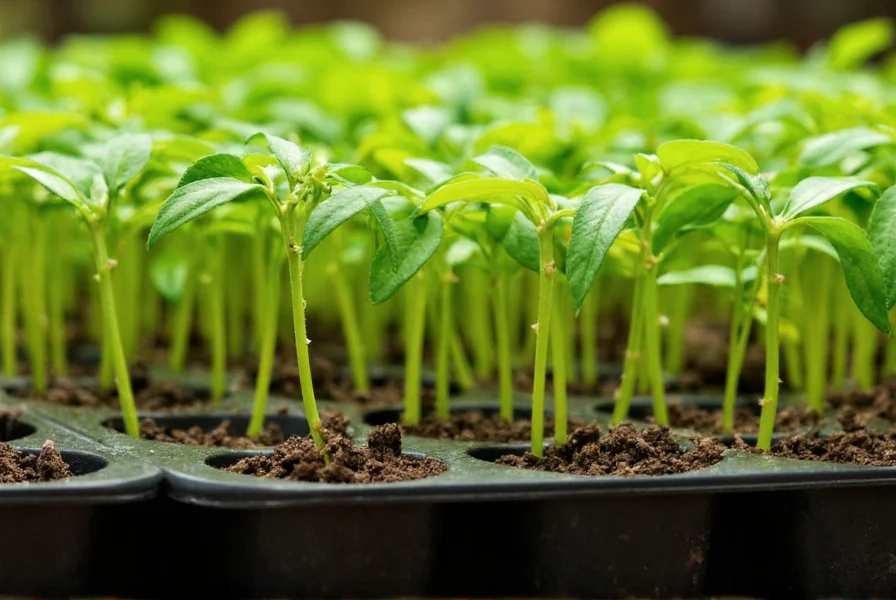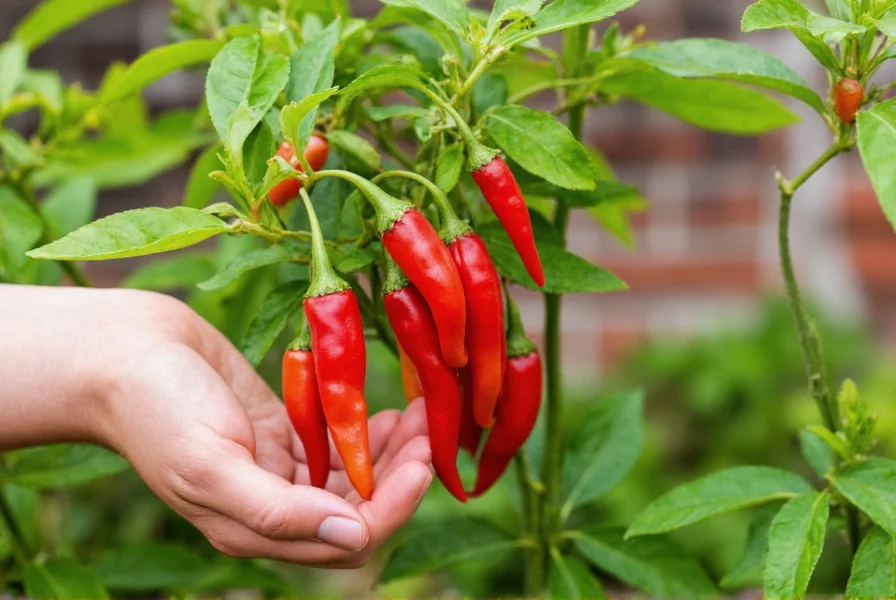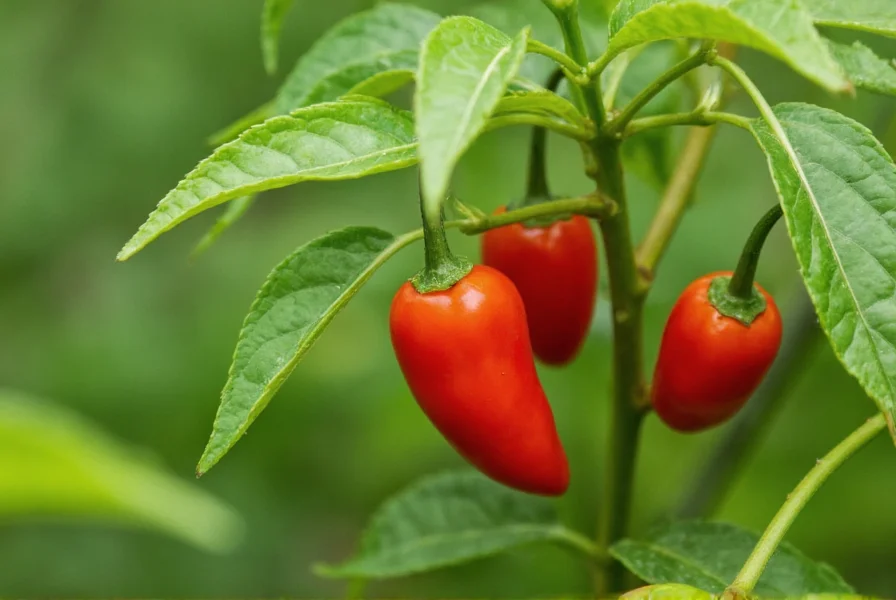Home gardeners increasingly seek to grow their own cayenne peppers for fresh culinary use, homemade hot sauces, and the satisfaction of cultivating fiery chili peppers. These vibrant red peppers, scientifically known as Capsicum annuum, deliver moderate heat (30,000-50,000 Scoville units) and distinctive flavor that enhances countless dishes. Unlike many commercial varieties, homegrown cayenne peppers often develop more complex flavors when cultivated with proper attention to their specific growing requirements.
Understanding Cayenne Pepper Plant Characteristics
Cayenne pepper plants typically reach 2-3 feet in height with slender, upright growth habits. Their fruits mature from green to brilliant red, measuring 6-10 inches long with thin walls ideal for drying. These peppers belong to the same species as bell peppers and jalapeños but develop significantly more capsaicin, the compound responsible for their heat. Understanding these characteristics helps gardeners provide appropriate care throughout the growing season.
Starting Cayenne Pepper Seeds Successfully
Begin your cayenne pepper journey 8-10 weeks before your region's last expected frost date. Use these proven techniques for optimal germination:
- Plant seeds 1/4 inch deep in seed-starting mix with bottom heat maintaining 80-85°F (27-29°C)
- Keep soil consistently moist but not waterlogged during germination (typically 7-14 days)
- Provide 14-16 hours of bright light daily once seedlings emerge
- Harden off plants gradually over 7-10 days before transplanting outdoors
Many gardeners wonder how to grow cayenne peppers from seed successfully when other chili varieties have failed them. The key difference lies in cayenne's slightly longer growing season and more specific temperature requirements during germination.

Optimal Growing Conditions for Maximum Yield
Creating the ideal environment separates successful cayenne pepper growers from those with disappointing harvests. Consider these critical factors:
| Factor | Optimal Range | Consequences of Deviation |
|---|---|---|
| Soil pH | 6.0-6.8 | Nutrient deficiencies below 6.0; reduced growth above 7.0 |
| Daytime Temperature | 75-85°F (24-29°C) | Flower drop below 60°F or above 90°F |
| Water Consistency | 1-2 inches weekly | Blossom end rot with inconsistent watering |
| Sun Exposure | 6-8 hours direct sun | Reduced fruit set with less than 6 hours |
When preparing your garden beds, incorporate 2-3 inches of compost and a balanced organic fertilizer before planting. Best soil for cayenne pepper plants contains ample organic matter while maintaining excellent drainage—sandy loam typically performs better than heavy clay soils. Raised beds often provide superior results in regions with heavy rainfall.
Planting and Spacing Considerations
Transplant cayenne pepper seedlings outdoors only after all danger of frost has passed and soil temperatures consistently reach at least 70°F (21°C). Space plants 18-24 inches apart in rows 24-36 inches apart to ensure adequate air circulation. Proper spacing prevents disease spread and allows each plant to develop fully. Consider these additional planting tips:
- Bury seedlings slightly deeper than their nursery containers to encourage stronger root development
- Add a balanced fertilizer (10-10-10) at planting time according to package instructions
- Mulch around plants with straw or organic mulch to maintain soil moisture and temperature
- Install support stakes at planting time to avoid root damage later in the season
Essential Care Throughout the Growing Season
Cayenne pepper plant care guide requires consistent attention to several key practices:
Watering Techniques
Water deeply 1-2 times weekly rather than frequent shallow watering. Maintain consistent moisture levels—allowing soil to dry completely between waterings causes blossom drop and irregular fruit development. Drip irrigation systems work exceptionally well for delivering water directly to roots while keeping foliage dry.
Fertilization Schedule
Apply balanced fertilizer every 3-4 weeks during active growth. When flowering begins, switch to a low-nitrogen, high-phosphorus formula (5-10-10) to encourage fruit production. Over-fertilizing with nitrogen promotes excessive leaf growth at the expense of fruit development.
Pest and Disease Management
Monitor plants regularly for common issues:
- Aphids: Spray with insecticidal soap or introduce ladybugs
- Spider mites: Increase humidity and apply neem oil
- Bacterial spot: Remove affected leaves and avoid overhead watering
- Blossom end rot: Maintain consistent soil moisture and ensure adequate calcium
For gardeners seeking organic pest control for cayenne peppers, consider companion planting with basil, marigolds, or garlic, which naturally repel many common pests.
Harvesting and Post-Harvest Handling
Knowing when to harvest cayenne peppers significantly impacts flavor and heat development. Most varieties reach maturity 70-80 days after transplanting. Harvest when peppers turn uniform bright red and feel firm to the touch. Use clean scissors or pruning shears to cut peppers from the plant, leaving a small stem attached.
For maximum heat development, allow peppers to remain on the plant until fully mature. Store harvested peppers at room temperature for immediate use, or dry them for long-term storage. Properly dried cayenne peppers maintain their heat and flavor for up to one year when stored in airtight containers away from light.

Troubleshooting Common Growing Challenges
Even experienced gardeners encounter issues when growing cayenne peppers. Address these common problems promptly:
Insufficient Fruit Set
If your plants flower but produce few fruits, consider these solutions:
- Hand-pollinate flowers using a small brush during periods of low insect activity
- Ensure proper temperature range (below 90°F/32°C) during flowering
- Avoid excessive nitrogen fertilization which promotes leaf growth over fruiting
Leaf Yellowing
Yellowing leaves may indicate:
- Nitrogen deficiency: Apply balanced fertilizer
- Overwatering: Reduce watering frequency
- Nutrient imbalance: Test soil and adjust pH if necessary
Maximizing Yield and Heat Level
Gardeners often ask about factors affecting cayenne pepper heat level. Several techniques can enhance both yield and spiciness:
- Slightly stress plants by reducing water 1-2 weeks before harvest (without causing wilting)
- Allow peppers to fully mature on the plant until deep red color develops
- Maintain daytime temperatures above 80°F (27°C) during fruit development
- Grow in containers with controlled soil conditions for more consistent results
For gardeners in cooler climates, growing cayenne peppers in containers allows you to move plants to optimal sun exposure and protect them from unexpected temperature drops. Container-grown plants typically require more frequent watering but offer greater control over growing conditions.
Preserving Your Cayenne Pepper Harvest
Extend your cayenne pepper enjoyment beyond the growing season with these preservation methods:
- Drying: String peppers on twine or use a food dehydrator at 125°F (52°C) until brittle
- Freezing: Chop peppers and freeze in airtight containers for cooking use
- Vinegar preservation: Create hot pepper vinegar by steeping peppers in vinegar
- Oil infusion: Make chili oil by steeping dried peppers in olive oil
Dried cayenne peppers can be ground into powder using a dedicated spice grinder. Store the powder in dark glass containers to preserve potency and flavor.
Frequently Asked Questions
How long does it take for cayenne peppers to mature from seed?
Cayenne peppers typically require 100-120 days from seed to mature harvest. When started indoors 8-10 weeks before transplanting, you can expect first harvests approximately 70-80 days after moving plants outdoors. The exact timeline varies based on climate conditions and specific variety.
Can I grow cayenne peppers in containers?
Yes, cayenne peppers grow well in containers with proper care. Use pots at least 12 inches in diameter with drainage holes. Container-grown plants require more frequent watering and fertilization but offer the advantage of mobility to optimize sun exposure and protect from temperature extremes.
Why are my cayenne pepper plants flowering but not producing fruit?
This common issue, called blossom drop, typically occurs due to temperature extremes (below 60°F or above 90°F), inconsistent watering, or lack of pollination. Ensure proper temperature range, maintain consistent soil moisture, and consider hand-pollinating flowers with a small brush during periods of low insect activity.
How can I increase the heat level of my cayenne peppers?
To enhance heat development, allow peppers to fully mature on the plant until deep red color develops, maintain daytime temperatures above 80°F (27°C) during fruit development, and slightly stress plants by reducing water 1-2 weeks before harvest (without causing wilting). Heat production increases as the plant experiences mild environmental stress.
What's the best way to store harvested cayenne peppers?
For short-term storage (2-3 weeks), keep fresh cayenne peppers in the refrigerator's crisper drawer. For long-term preservation, dry peppers until brittle then store in airtight containers away from light, or freeze chopped peppers in freezer bags. Properly dried cayenne peppers maintain their heat and flavor for up to one year.











 浙公网安备
33010002000092号
浙公网安备
33010002000092号 浙B2-20120091-4
浙B2-20120091-4